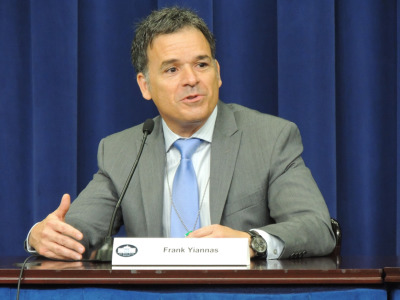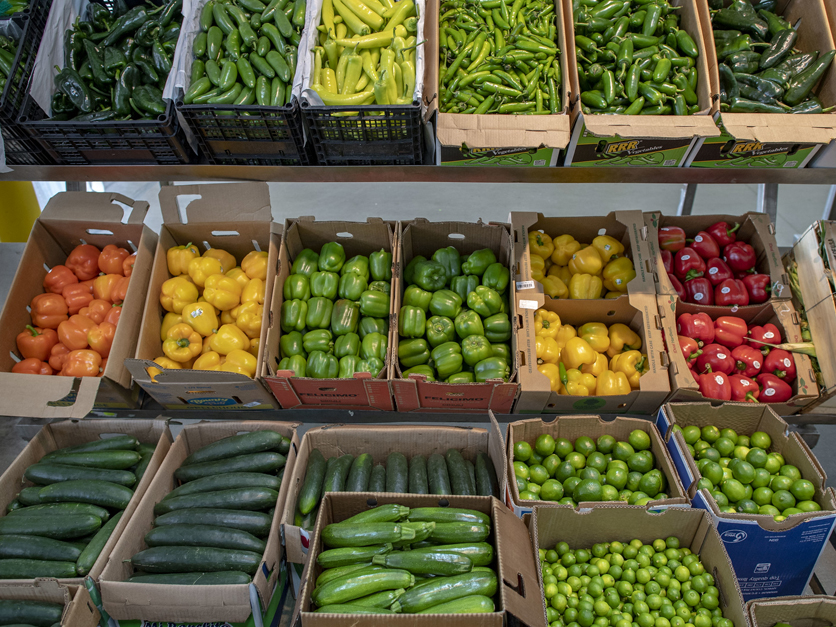Farmers and food companies are under pressure from their customers and federal officials to expand the use of digital tracking methods as a way to curb foodborne illness outbreaks and document that their products were grown sustainably. Farm groups, however, are concerned about the privacy of the data that is being generated.
Some such tracking is already occurring. Fruits or vegetables, for example, can be tracked by attaching a sophisticated bar code known as the global trade item number to packaging. This information could include the date of harvest or date of packaging, along with company information. Then, the product moves down the supply chain to a distributor or processor, a grocery store, and finally on to the consumer.
But Jennifer McEntire, senior vice president of food safety and technology at the United Fresh Produce Association, said the current system isn't perfect because the product doesn't get tracked at all points in the supply chain.
"The closer you get to consumers is where things are maybe not as well tracked and traced. It's where the volume and the movement is higher. The diversity of products being handled is higher," she told Agri-Pulse. McEntire said tracking models exist, but it's a matter of getting everyone along the supply chain to do their part.
Frank Yiannas, the Food and Drug Administration's deputy commissioner for food policy and response, has been promoting the digitalization idea over the last year by outlining the New Era of Smarter Food Safety blueprint rolled out in July 2020.
The blueprint highlights four pillars surrounding tech-enabled traceability, prevention and responding to an outbreak, business models and retail modernization, and food safety culture.
Speaking in September to the National Association of State Departments of Agriculture, Yiannas said he firmly believes digitization of the food system will lead to a safer, more transparent, more resilient, and sustainable food system.
He said digitization was critical throughout the pandemic.
“We created a tool called 21 Forward where we digitally started tracking the assets of food production across the United States, tracking Covid transmission at the county level and seeing where there were food production facilities in what we called ‘rapid riser’ communities,” he noted.
The goal of the program was to find where the greatest risks of disruptions could be along the supply chain as COVID-19 cases began rising across the country in 2020.

Frank Yiannas, FDA
Yiannas said there has to be shared value where retailers, processors, and farmers can all benefit from using data to trace products from the farm to the final consumer.
“As a small farmer, if there’s a mango outbreak, the reality is we’re going to pull them all off the shelf and all mango suppliers are going to be guilty until proven innocent and so we’re all going to lose sales and damage consumer trust,” he said.
Currently, the processor gets accused of doing something wrong if the mangos spoil once they reach the grocery store shelf, Yiannas added. He noted digitization of time temperature monitoring of produce during transportation could solve shelf-life problems.
Mary Shelman, the head of consulting firm the Shelman Group who formerly led the Harvard Business School’s Agribusiness Program, said consumers want to know that sustainability is fundamental, supported, and demonstrated by proof of what companies are doing. She said a prime example is companies like Danone that are developing regenerative agriculture models focused on protecting soil health and animal welfare.
“It’s just not enough to tell a good story. You have to have the data and you have to have programs that you can show progress,” she said.
While the digitization of the food system could be beneficial, California Department of Food and Agriculture Secretary Karen Ross said the key is going to be comfort in data sharing. Some producers become concerned when they share data with other entities throughout the supply chain in fear it could be used against them in some way.
“When we look at what retailers collect, when we look at what processors collect, what we know packers collect and what we know farmers have, and I think the real critical answer to this is how do we create trust and structure for data sharing for the public good,” Ross told Agri-Pulse.
But she said there are benefits for companies who are trying to meet sustainability goals and tell a particular story of their brand names and where their product originated. Ross noted this includes programs such as those Cargill and others are employing to reduce their climate and water-use footprints.
On Sept. 16, Cargill announced it would be paying farmers for boosting soil health through environmental practices and carbon sequestration. Being able to gather data to show which practices farmers are using on their operations can help show which ones may be working to reduce carbon emissions over time.
But Eric Deeble, policy director at the National Sustainable Agriculture Coalition, said big and small farmers must be able to have equal access to technologies that aggregate data.
“Right now, there is a tremendous amount of information that is generated from farms, but much of it is coming from big pieces of equipment operating on really big pieces of land,” he told Agri-Pulse.
On the vegetable production side, Deeble does see opportunities for small to mid-sized producers who could leverage the data to show where the product is grown.
He said being able to trace a bag of carrots back to a producer who has implemented climate mitigation strategies or conservation practices at their operations “might help them grow their business or be more profitable,” he said, referring to specific ethics a consumer may care about.
Interested in more news on farm programs, trade and rural issues? Sign up for a four-week free trial to Agri-Pulse. You’ll receive our content — absolutely free — during the trial period.
But Deeble said a digital tracking tool must be affordable for all producers.
“You can’t ask a small two-person operation to have a data analytics professional on staff in order to meet the requirements FDA may put forward,” he noted.
Other industry stakeholders see digital technology as a way to help improve product safety for consumers and say a tracking system should be universal for all specialty crops. In comments submitted to FDA earlier this year, the Western Growers Association, which represents produce farmers in California, Arizona, New Mexico, and Colorado, said that all produce should be traced.
“From a grower perspective, it is not practical or feasible to manage different recordkeeping systems for different crops. Consistent implementation of new recordkeeping requirements across the supply chain for all produce would be beneficial to all entities involved and would better protect public health,” the comments read.

Charles Hurburgh, Iowa State
Charles Hurburgh, a professor of agricultural engineering at Iowa State University, said the university has been working on grain traceability for the last three years, especially as more carbon credit markets surface in the agricultural sector.
The purchaser, who may be providing a carbon credit to the farmer for the grain, wants to know that the specific grain being bought is the same grain produced with a climate-smart or conservation practice associated with the carbon credit, not something different, Hurburgh told Agri-Pulse.
While noting GPS accuracy has gotten progressively better since its introduction in farm equipment across the country, Hurburgh said it’s hard to track the grain from an individual tank on a combine.
On one farm alone, corn might go from the combine into the grain bin, where it is blended with the production of other fields. Then, some of the grain is removed to be hauled to a grain elevator where the load is blended again with corn from different farms.
Hurburgh said the goal is to “try to improve the accuracy of the data that you pass from one place to another” and validate the steps with software and mathematical modeling to improve that process.
Knowing where exactly in the field the corn came from using GPS tracking could be beneficial to an ethanol plant if the data can be used to pinpoint which areas of the field produced corn that had a higher starch content since starch is a critical component needed for producing ethanol.
Hurburgh said the university is expected to open a new grain milling facility next fall to teach students how blockchain works in the grain industry.
For more news, go to www.Agri-Pulse.com.


